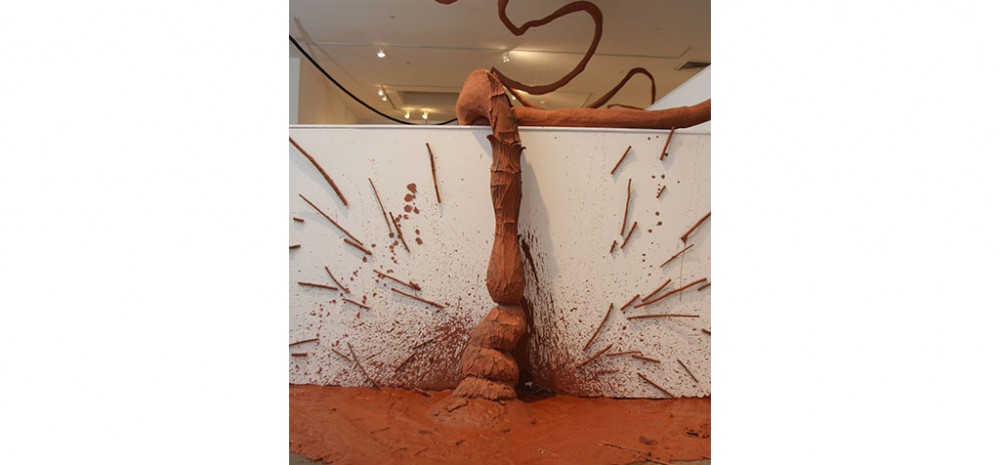Story Line, 2008 by Eliza Naranjo Morse, Nora Naranjo Morse and Rose B. Simpson
Sometimes extraordinary things start from a simple idea; shaped by a split second, a conversation, an understanding, even a sound that triggers a memory. It all starts somewhere. To recognize this kind of occasion is a wondrous chance and fortunate opportunity. When one is lucky enough to experience this creatively, the possibilities seem limitless. Letting go and trusting the artistic journey adds to the chemistry of possibilities and this is how it began for the three of us.
We are related through blood. Because we’ve known each other for most of our lives, there is a clear understanding that connects us to basic awarenesses and concepts. One morning we sat down over coffee and before long the shared experience of being artists, women, and family, fueled our creativity and allowed us to tap into and cut directly to how our project idea would develop for the seventh SITE Santa Fe Biennial.
We agreed that our project should speak fearlessly to the ideas of community and collaboration with a simple, yet direct articulation. We come from a cultural perspective that is heavily influenced by the land. People who have cultivated the earth, made their homes from mud, their vessels from clay, and their food from the earth. So when the question of material surfaced, it seemed obvious to us that we would work with clay. Our installation, Story Line, begins at a very simple place, emerges from the land, and moves outward. Our supporting materials have been an exciting variables, and unusual items like rice, nylon, batting, thread, and waddle will be used to create textures, and add weight and basic form to the piece. We are scavengers, exploring the aisles of Wal-Mart for batting material and stopping on the side of the road to inspect erosion blockers. Considering just about any creative variation has added depth to our process, infusing us with an excitement that comes with collaboration at it’s best.
The clay will cover the supporting materials making a thread, or line, that will emerge from the ground and travel through different spaces. Depending upon the environment, the clay thread will widen, curve and drape along trees, hang against walls, and flow through particular sites within the city of Santa Fe. In keeping with the idea of community, when invited by the other Lucky Number Seven artists, the clay thread will interact with other installations, weaving in and out of this community of artists who have also come to this land to create.
Eliza, Nora, and Rose’s installations are located outside the School of Advanced Research, in and out of the IAIA, at the St. Francis Auditorium at the Museum of Fine Arts, and at SITE, both outside near the front entry and in Gallery 1.
Eliza Naranjo Morse’s first experience with art, and the processes involved with creating a work of art, occurred when she was a child growing up in northern New Mexico. She spent much of her time helping her family collect and sift the clay that lies in abundance in the region, preparing the material for future use in pottery, sculpture, and architecture.
Drawn to mark-making and the tactility of paper, Naranjo Morse began to explore the properties of drawing at an early age. The decision to hone her skills ultimately brought her to Skidmore College, located in upstate New York, where she received her B.S. in art in 2003. Upon returning to Santa Fe, she began to refine her artistic practice, merging her interests in drawing with clay. Recently Naranjo Morse has been drawing on raw canvas with all organic materials, including beetroot, tea, as well as micaceous clay, and a volcanic ash collected in New Mexico and beyond.
The artist’s approach to art-making is dually informed by her formal training and childhood experiences with the clay-making process. By paring down the materials that she uses in addition to focusing on the central elements of picture-making, such as line, form, and space, Naranjo Morse has allowed the nature of her materials to inspire simple studies that are uncomplicated interactions of her history, knowledge, and personal aesthetic.
Joseph Sanchez
